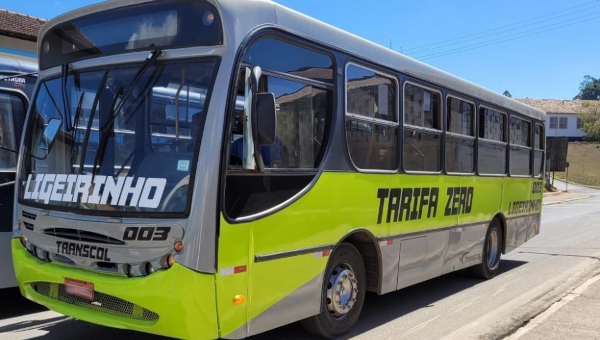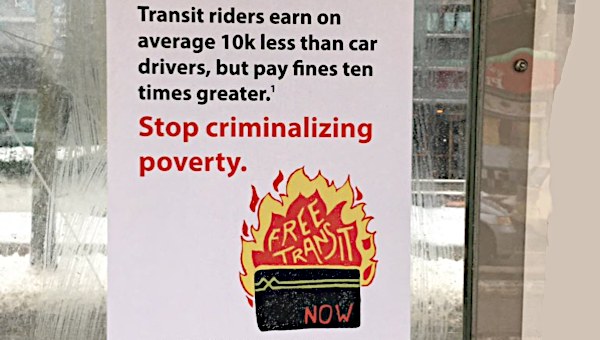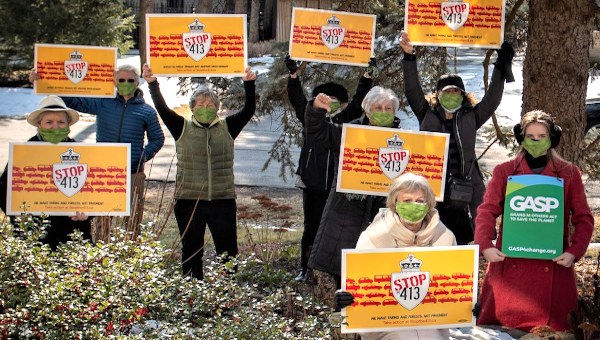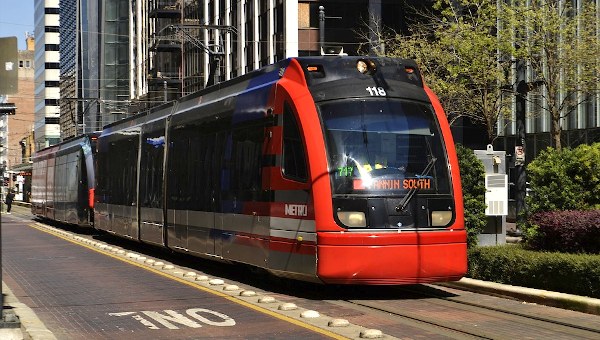The Transit Equity Movement Wins Their Biggest Zero Fare Victory Yet
It’s happening: the city of Albuquerque (population 1 million) is permanently eliminating public bus fares, becoming the largest US city to embrace this critical step toward racial and economic equity. A coalition headed by Together for Brothers – a community-organizing and power-building group led by and for young men of color – made the victory possible.
In an interview with Inequality.org, the group’s Co-Founder and Executive Director, Christopher Ramirez, explained that it all started in 2017 when Together for Brothers applied for a Health Impact Assessment grant.
“When we were applying for the grant, we had a couple sessions with the young men of color we were working with,” Ramirez said. “We were going through different issues, asking, ‘What are some of the biggest problems and root causes in our community?’ Without a doubt, in all the sessions, it was access to transportation.”
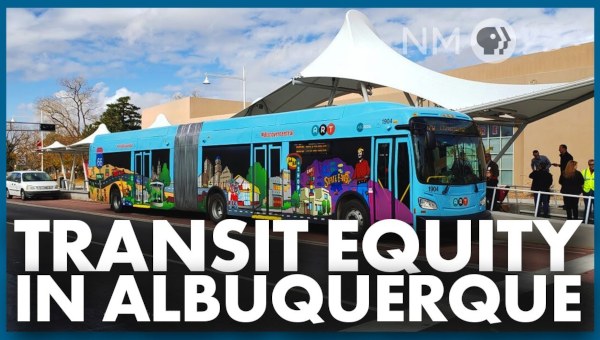
From Research to Policy
After a year of research, the group turned to crafting policy solutions.
“During one of the strategy sessions, a high-school student, Jacob, said, ‘Why don’t we just make public transportation free for everybody?’” Ramirez recalled.
“We laughed. But by the next week, we realized he wasn’t joking. By the end of the month, we decided to include it in our campaign.”
First, the group pushed for a two-year “Zero Fare” pilot program that proved highly successful. As ridership dwindled during the pandemic, the city expanded free rides from a few routes to the entire system.
Barely a year later, ridership was up 49.4 percent, and the program proved to be more cost-effective than previously imagined. Now, free fares are here to stay. In a landslide 6-3 vote on November 8, the City Council made the “Zero Fare” program permanent.
Fare-free pilots and policies have been gaining traction in various other cities across the US, including Kansas City, Missouri, and the Virginia cities of Richmond and Alexandria.
In fact, this past September, NYC’s Metropolitan Transit Authority – which runs North America’s largest public transportation network – announced that they are launching a fare-free pilot program of their own.
The logic is simple: if most roads are toll-free, shouldn’t public transit be fare-free too?
Labor unions and racial, economic, and environmental justice groups have been driving this momentum. These advocates argue that transit equity is a race-and-class equity issue – and Albuquerque bus-rider demographics substantiate that.
Most bus riders are people of color, 74 percent are low-income, and 73 percent don’t have access to a car. Before the “Zero Fare” pilot, 90 percent of riders surveyed reported not being able to afford the fare at least once in the past month.
“Zero Fares has helped me save and put my money on food. Worrying less about budgeting for my weekly commute is a big stress reliever,” explained González, a lifelong bus rider who participated in a Together for Brothers survey.
Public Transit Workers
Zero Fares is also popular with bus drivers. “I want to implore you to do what you can to keep the free-fare program going,” wrote one long-time bus driver in a survey by the city’s transit agency. “To eliminate it would affect the most vulnerable in our beautiful city. To end it would put the bus drivers in harm’s way, as they are the ones on the front lines, dealing with the frustrated folks that will take out their frustration on the drivers and buses. Possibly on other passengers.”
Fare collection forces drivers to police passengers, which can lead to tension. A national survey of transit agencies found that fare enforcement is a factor in 67 percent of incidents in which drivers are assaulted by passengers.
Eliminating fares can also reduce racial discrimination. When Albuquerque rolled out free fares for students, Ramirez said young Black men were often told they couldn’t ride the bus without paying because they “looked too old to be in high school.” He told the story of one Together for Brothers organizer, a high-school senior who was denied bus entry more than a dozen times.
Of course, the free-fare initiative faced opposition from groups like the National Taxpayers Union, which fights to slash public services across the country. But those who claimed the free-fare program would be too costly lost all credibility when a government analysis found that the initiative would actually save money.
Despite charging $1 per ride, the average revenue per rider between 2014 and 2020 was only $0.34. Between 2019 and 2021, social service agencies that purchased passes to distribute to low-income households spent a total of $768,000 on passes. According to Ramirez, projections showed the city spending as much as $1.75-million each year just to administrate fare collection.
This means that, in the year prior to the Zero Fare pilot program, fare revenue wasn’t even enough to cover the collection costs. When these figures became public, it suddenly became clear as day that paid fares were never a viable revenue strategy – they were a tax on the poor.
Public transit investments create huge economic ripple effects. The American Public Transportation Association estimates that every $1 invested generates $5 in economic returns. Better funding and (crucially) more ridership mean more jobs and increased commercial activity.
By connecting people to medical, educational, professional, and community-building resources, affordable and accessible public transit changes lives.
The bottom line: ensuring mobility is a matter of economic and racial equity and, when we do it right, everyone benefits.
What does Christopher Ramirez of Together for Brothers see as the key lesson from the organizing behind the Albuquerque victory? “Listen to the most impacted people in your community. It’s a game changer.” •
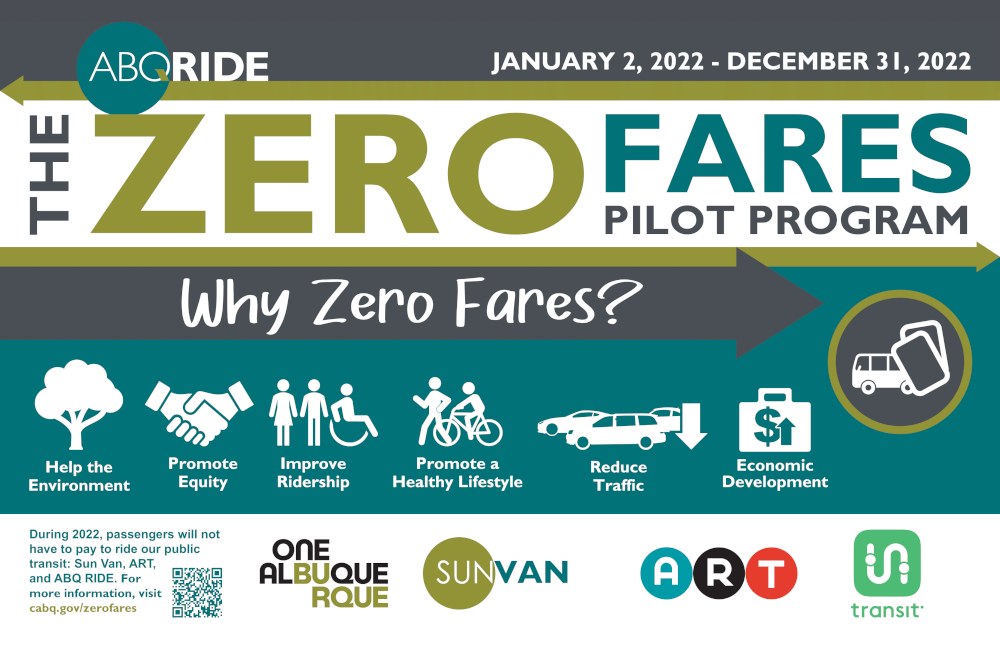
This article first published on the Inequality website.


